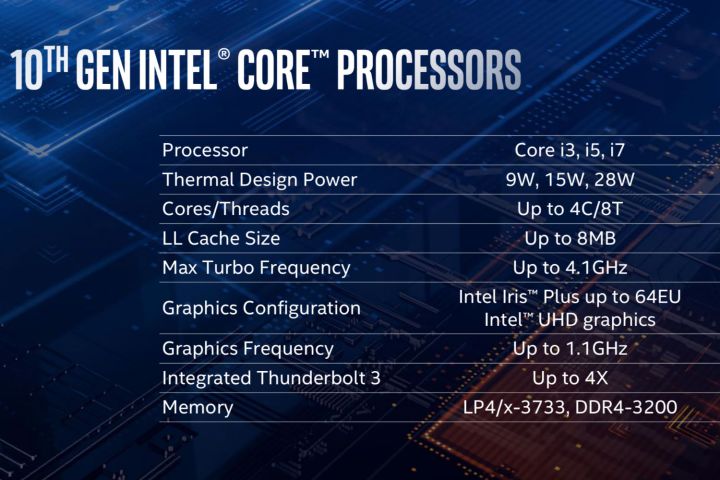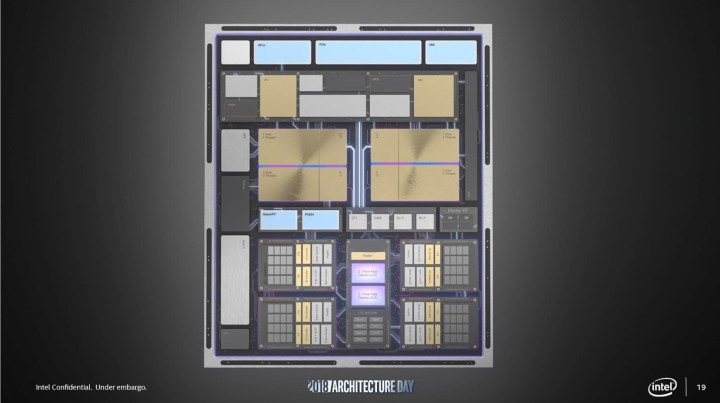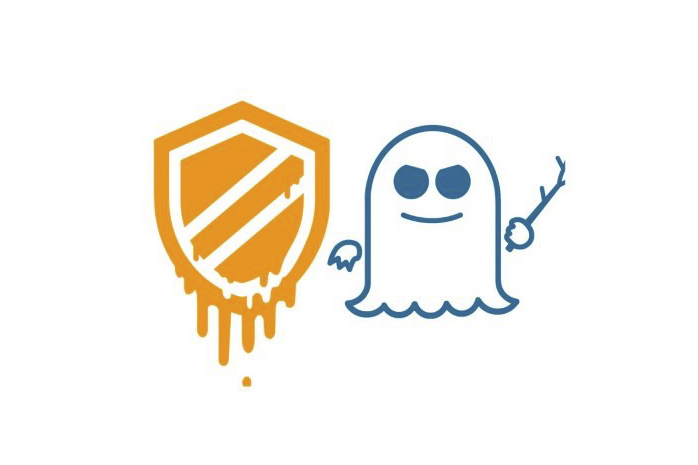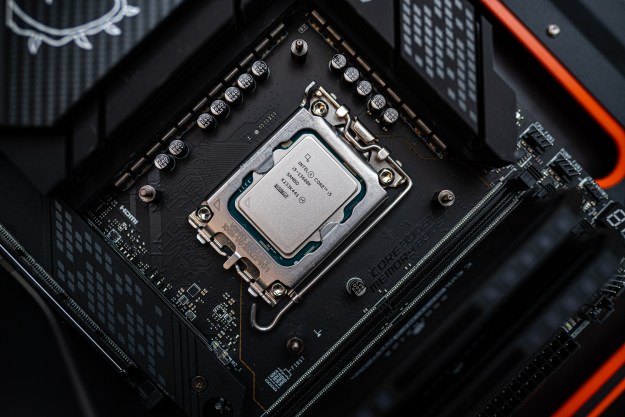Intel has been shooting for a 10nm architecture for years, and it finally achieved that with Ice Lake CPUs. The years of anticipation and hype surrounding Intel’s delayed push to a smaller process node built an exciting aura around Ice Lake in 2019. In 2021, after the launch has come and gone, it’s clear Ice Lake represented a stepping stone for Intel, even if the platform didn’t deliver in all the ways we expected.
From pricing to performance and connectivity changes, we’ve rounded up everything you need to know about 10th-gen Ice Lake CPUs. Although they’re faster than the generation that proceeded, Intel has already started pushing its 11th-gen Tiger Lake platform, which features improvements of its own.
Pricing and availability

Ice Lake was officially announced at CES 2019 and though it was initially given a rough release date of Holiday Season 2019, it was only a few months later that Intel began announcing mobile Ice Lake CPUs for laptops and 2-in-1s. At the time, Intel announced U-series and Y-series processors and many, including us, anticipated more. However, Intel never released more under the Ice Lake name, short of a few OEM-exclusive parts.
The Ice Lake launch was followed by the mobile Comet Lake launch shortly after (often referenced as Comet Lake-H or Comet Lake-U). This caused a bit of an issue, as Intel was actively supplying system makers with two different 10th-gen mobile lines. Dell, for example, chose to power its 2020 XPS 15 with Comet Lake-H chips while sticking with Ice Lake for the XPS 13.
And now as Intel pushes ahead with its 11th-gen Tiger Lake platform, Ice Lake is slowly fading away. You can still find Ice Lake machines as of early 2021, however, ranging from $500 for the Dell Inspiron 15 3000 with an i3-1005G1 to almost $1,200 for certain Acer Swift 5 models (most are being replaced with 11th-gen chips now).
Performance and architecture

Ice Lake is built upon Intel’s Sunny Cove architecture which utilizes a 10nm process. When combined with software tweaks that allow for on-the-fly adjustments to memory frequency and screen refresh rate, Ice Lake-equipped laptops should be very energy efficient. Intel told Digital Trends that Sunny Cove should push laptop battery life to more than a day. It managed as much as 25 hours in some early prototypes.
Our testing of the Ice Lake-equipped Dell XPS 13 2-in-1 and HP Spectre x360 13 backed up the long battery life claims. Under ideal conditions, like the 1-watt, 1080p screen available to the Spectre x360, an Ice Lake laptop can last all day. Under intensive use, or with a brighter, higher resolution screen, battery life still decreases dramatically.
Most will be more interested in performance, though. Early performance tests of these chips seem strong, with notable improvements in graphical power over their 8th-generation counterparts.
U-series
| Cores/Threads | Graphics (execution units) | Cache | Base clock | Boost clock (all-core) | Graphics boost clock | TDP | |
| Intel Core i7-1068G7 | 4/8 | Iris Plus (64) | 8MB | 2.3GHz | 4.1GHz (3.6GHz) | 1.1GHz | 28w |
| Intel Core i7-1065G7 | 4/8 | Iris Plus (64) | 8MB | 1.3GHz | 3.9GHz (3.5GHz) | 1.1GHz | 15w/25w |
| Intel Core i5-1035G7 | 4/8 | Iris Plus (64) | 6MB | 1.2GHz | 3.7GHz (3.3GHz) | 1.05GHz | 15w/25w |
| Intel Core i5-1035G4 | 4/8 | Iris Plus (48) | 6MB | 1.1GHz | 3.7GHz (3.3GHz) | 1.05GHz | 15w/25w |
| Intel Core i5-1035G1 | 4/8 | UHD (32) | 6MB | 1.0GHz | 3.6GHz (3.3GHz) | 1.05GHz | 15w/25w |
| Intel Core i3-1005G1 | 2/4 | UHD (32) | 4MB | 1.2GHz | 3.4GHz (3.4GHz) | 0.9GHz | 15w/25w |
Y-Series
| Cores/Threads | Graphics (execution units) | Cache | Base clock | Boost clock (all-core) | Graphics boost clock | TDP | |
| Intel Core i7-1060G7 | 4/8 | Iris Plus (64) | 8MB | 1.0GHz | 3.8GHz (3.4GHz) | 1.1GHz | 9w/12w |
| Intel Core i5-1030G7 | 4/8 | Iris Plus (64) | 6MB | 0.8Ghz | 3.5GHz (3.2GHz) | 1.05GHz | 9w/12w |
| Intel Core i5-1030G4 | 4/8 | Iris Plus (48) | 6MB | 0.7Ghz | 3.5Ghz (3.2GHz) | 1.05GHz | 9w/12w |
| Intel Core i3-1000G4 | 2/4 | Iris Plus (48) | 4MB | 1.1GHz | 3.2GHz (3.2GHz) | 0.9GHz | 9w/12w |
| Intel Core i3-1000G1 | 2/4 | UHD (32) | 4MB | 1.1GHz | 3.2GHz (3.2GHz) | 0.9GHz | 9w/12w |
There’s a lot to digest here, with Intel changing both its naming conventions for chips, as well as the typical configurations of hardware it offers. That, combined with broad-range TDP numbers suggest we might have varied performance from individual chips depending on the laptops they end up in.
At the top end, Core i7 CPUs still rule the roost with four cores and full support for hyperthreading. They also enjoy the greatest amount of cache, the highest boost clocks on both single and all cores (though not always the highest base clock), as well as the most powerful graphics. The Core i5 chips aren’t too different, typically sporting the same cores and threads, but slightly weaker CPU and graphics boost clocks.
Core i3 CPUs now represent even more of an entry-level chip, with a maximum of two cores in both the U and Y-series, with much weaker, last-generation UHD graphics. Boost clock speeds remain reasonable though, which brings us to our discussion of TDP.
TDP is a figure that combines power requirements and thermal dissipation requirements. But in this case, there are two figures, which suggests that if manufacturers put these chips into laptops or tablets with stronger cooling, then performance can increase or sustain for longer. All TDPs are higher than we might have expected from a new, die-shrunk architecture, but it could be that instead of leveraging that shrink to improve efficiency and reduce power requirements, Intel has instead doubled down on performance. Intel told us, for example, that the high-end 28-watt part has a higher TDP to support the more powerful graphics.
This played out in our testing of the OLED HP Spectre x360 13, where we saw noticeable improvements in processing and graphical power from the Intel Core i7-1065G7 under the hood compared to the previous generation.
More recent and conclusive head to head testing from the likes of PCPer, show that Ice Lake holds varied advantages over its predecessors in the eighth-generation. The CPU cores are between 10% and 50% faster depending on the benchmark, but graphically far more capable, often offering as much as 100% increase in benchmark score.

Ice Lake also supports a new instruction set: AVX 512. Although that is unlikely to have much application for the average worker or gamer, when it comes to high-powered A.I. tasks, cryptography, or video editing, this new instruction set could have a dramatic impact on performance once it becomes more widely adopted. When combined with Ice Lake’s new support for Vector Neural Network Instructions, anything incorporating A.I. — like visual image searches or smart assistants — could see dramatic improvements in response times.
The problem in 2021 is that Intel has already pushed ahead. Ice Lake tops out at four cores and eight threads, while mobile Comet Lake chips reach up to eight cores and 16 threads. Even with Ice Lake’s architectural improvements, mobile Comet Lake chips simply have more horsepower, making an Ice Lake i7 roughly equivalent to a mobile Comet Lake i5. That shows up clearly across most benchmarks, with Ice Lake chips flanked by lower-end Comet Lake offerings.
Iris Plus graphics

Beyond the central processing capabilities of Ice Lake chips, the Core i5s and Core i7s also incorporate an 11th-generation Intel graphics core. That’s just one generation away from Intel’s 12th-gen architecture for Rocket Lake processors and upcoming dedicated GPUs. Branded as “Iris Plus,” this new integrated graphics option gives Ice Lake laptops a significant boost over Intel UHD graphics.
In actual games, that means a big uplift in performance. Examples given by Intel include over 40 fps (frames per second) in Fortnite at medium settings and 80 fps in CS:GO on medium settings. That still doesn’t compare all that well to discrete graphics, but it’s a nice jump up from basic Intel UHD graphics and competes favorably with AMD’s onboard Vega cores, as we saw in our Surface Laptop 3 review.
We don’t recommend trusting internal benchmarks, and our testing of Iris Plus shows why. With the XPS 13 2-in-1, we averaged 35 fps in Fortnite at medium settings, just shy of the number provided by Intel. However, with the HP Spectre x360, we managed just 12 fps. Ice Lake was a big step up for Intel in terms of integrated graphics, but that step was still relative.
Other benchmarks show that. Compared to older generations of integrated graphics, Ice Lake is a clear and stark improvement. Still, even the high-end G7 graphics fall short of Nvidia’s MX250 mobile GPU. Even the most inexpensive dedicated GPUs blow Ice Lake out of the water, too. In Rocket League, for example, a GTX 1650 Max-Q delivers over double the framerate of an Iris Plus G7.
The important thing here is that Ice Lake chips can actually run games, and run games more than a few years old at acceptable framerates. In 2021, however, it’s hard to recommend Ice Lake for its graphics. Tiger Lake mobile processors are better for entry-level gaming with their 12th-generation Xe graphics.
Improved connectivity

Keeping up with the trends in wireless networking, Ice Lake has native support for Wi-Fi 6 (802.11.ax) to give devices access to the highest speed of wireless internet and local data transfers. As more Wi-Fi 6 router options become available, we’ll begin to see the real results of the significant increase in speed that comes with the new standard, which could provide up to a 70% reduction in latency.
Intel’s own version is called Wi-Fi 6 Gig+, which doubles Wi-Fi 6’s support of 80MHz channels up to 160MHz.
The other high-speed connectivity that Ice Lake champions is Thunderbolt 3. The architecture for Thunderbolt support on Ice Lake has been redesigned to allow manufacturers to easily accommodate ports on both sides of the system, similar to Apple’s MacBook Pro implementation. Also, simplifying the Thunderbolt design will reduce power consumption by 300 milliwatts per port when the port is fully utilized.
Spectre and Meltdown

Ice Lake’s architecture, Sunny Cove, has hardware fixes for the Spectre and Meltdown architectural flaws that caused so much consternation among hardware manufacturers and software developers over the past year. We’ve seen microcode fixes for many of the most affected, recent-generation chips, and some of Intel’s ninth-generation chips implemented hardware fixes for specific instances of these exploits.
Intel has confirmed, however, that Ice Lake goes beyond that, representing the first mainstream CPU generation from Intel to mitigate major Spectre variants at the silicon level. That also means that some of the performance-impacting stop-gap solutions protecting users against these exploits aren’t present, although most think it unlikely that Ice Lake will be able to halt all the potential exploit paths, and there’s no accounting for new mitigations that are implemented in the future.
Editors' Recommendations
- Everything we know about Lunar Lake, Intel’s big next-generation chips
- Some surprising details on Intel’s upcoming 14th-gen laptops just leaked
- Get ready to pay more for Intel’s next-gen CPUs
- Intel’s next budget CPUs may finally be worth buying for gamers
- CES 2023: Intel’s new 13th-gen CPUs are faster, cheaper, and more efficient




